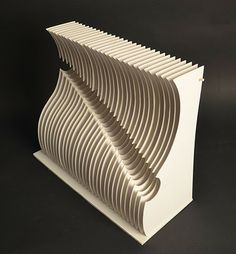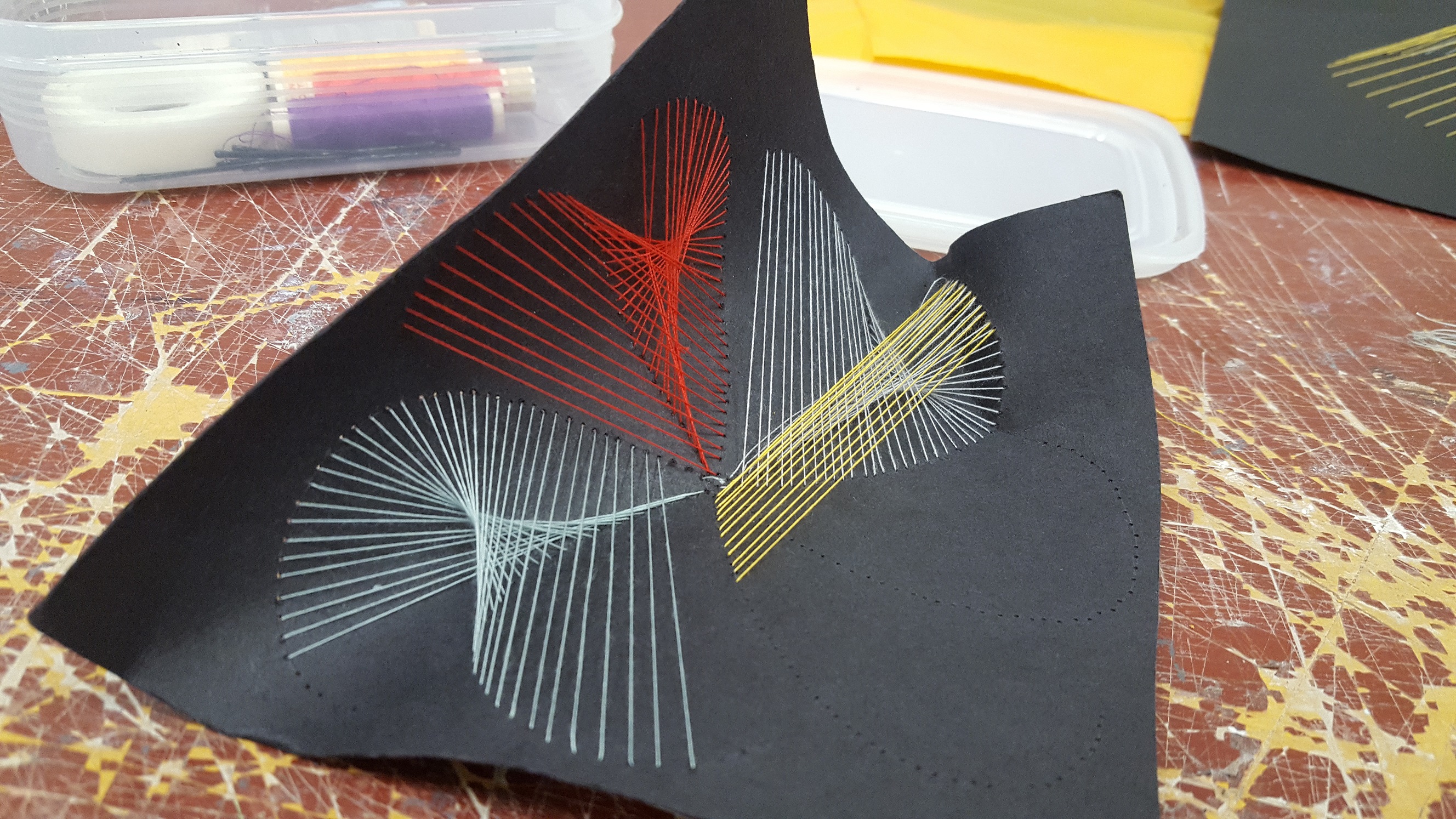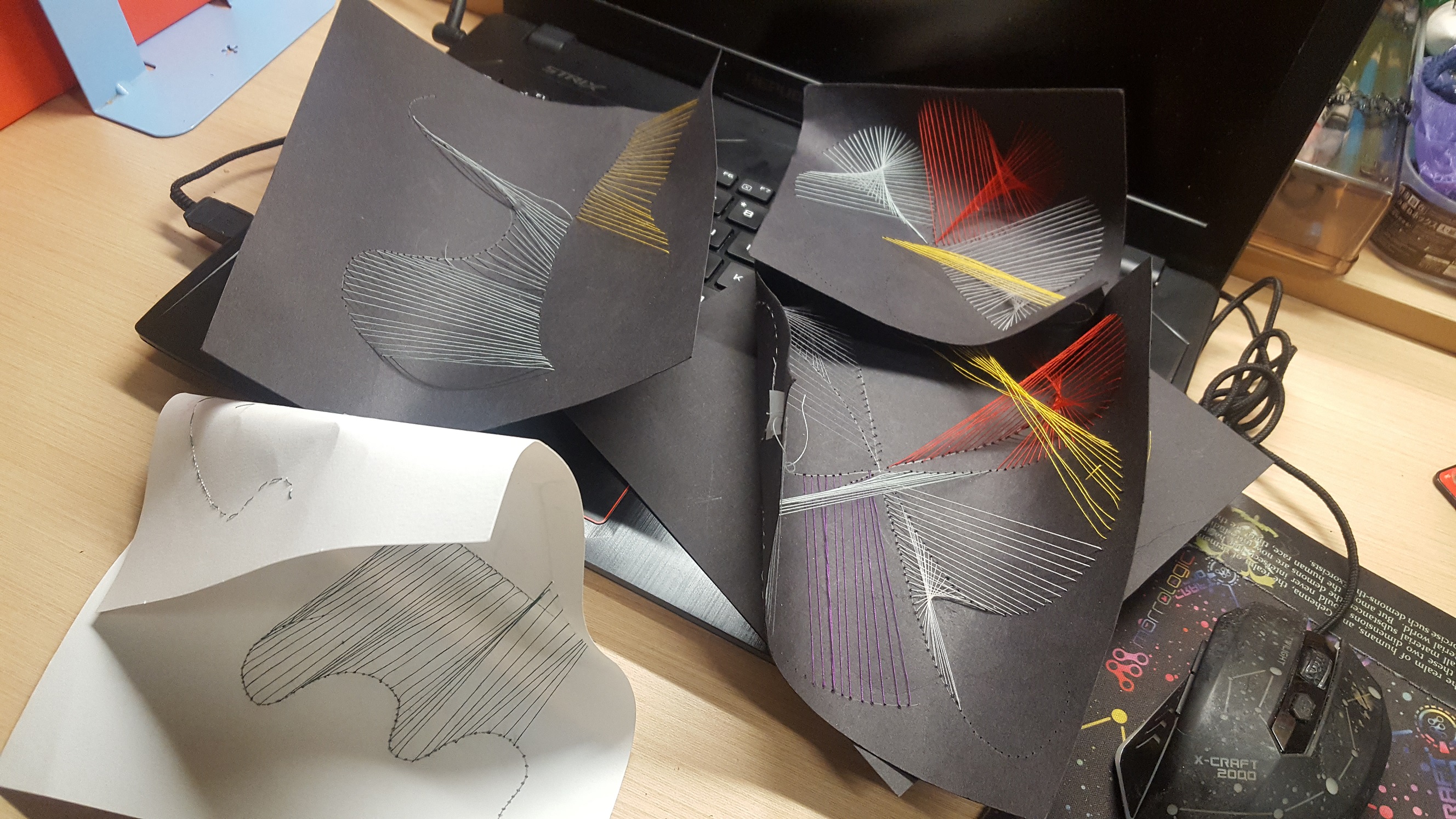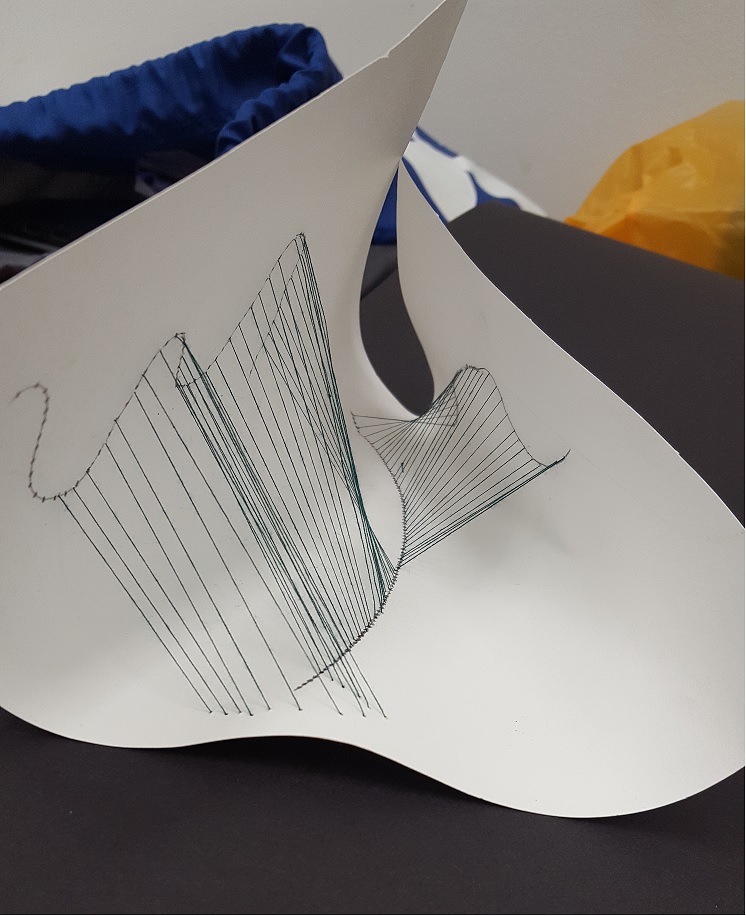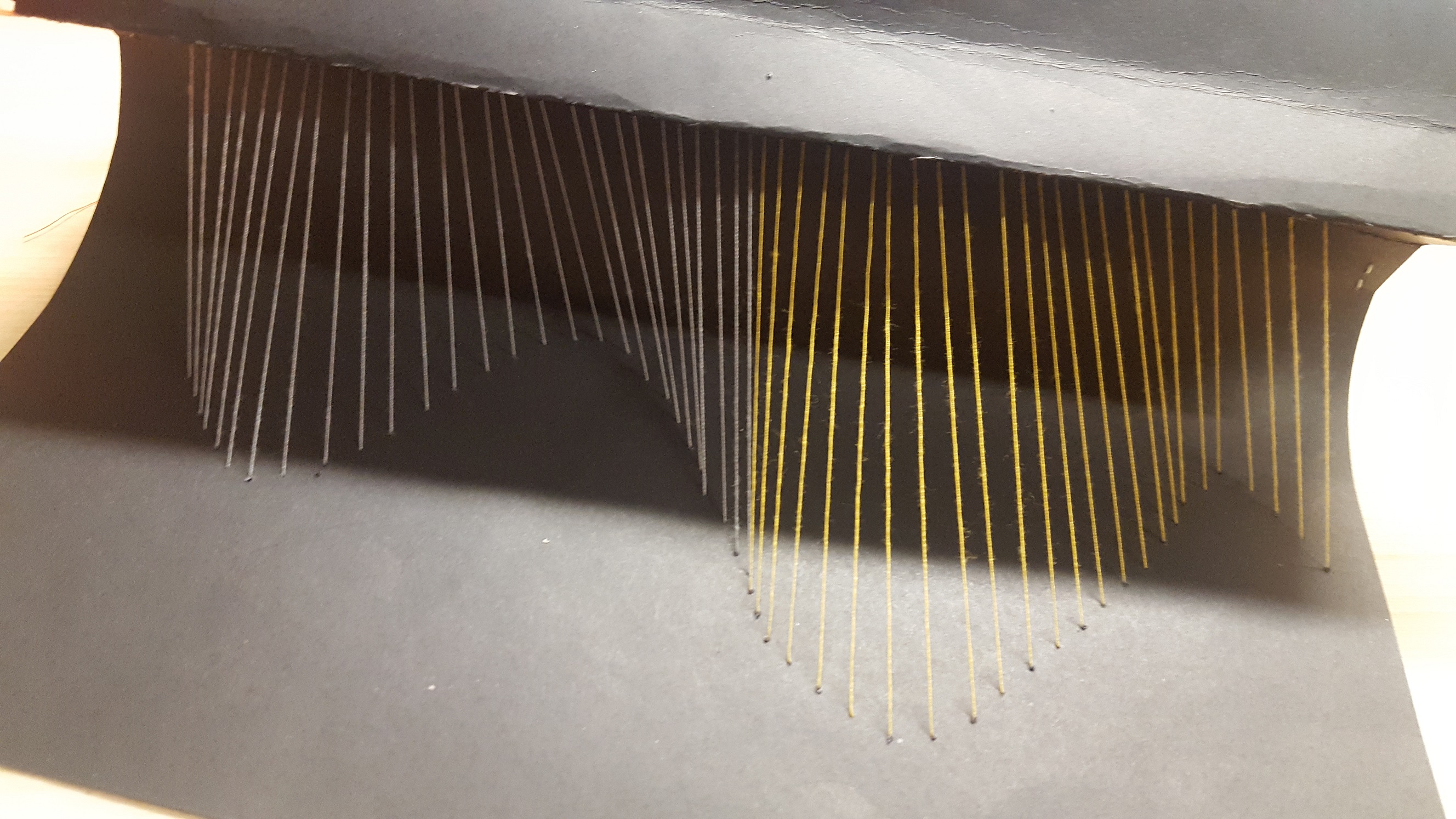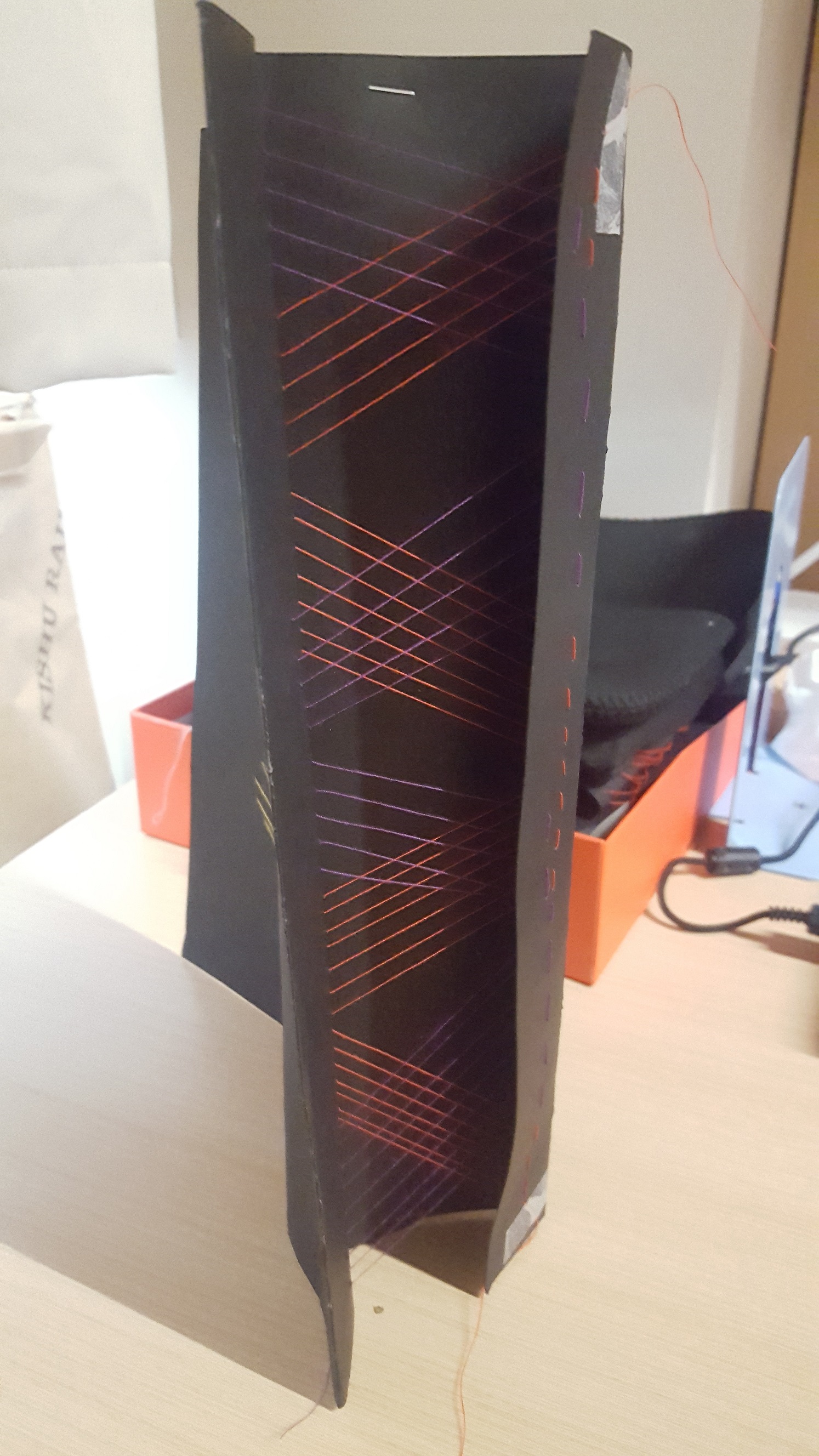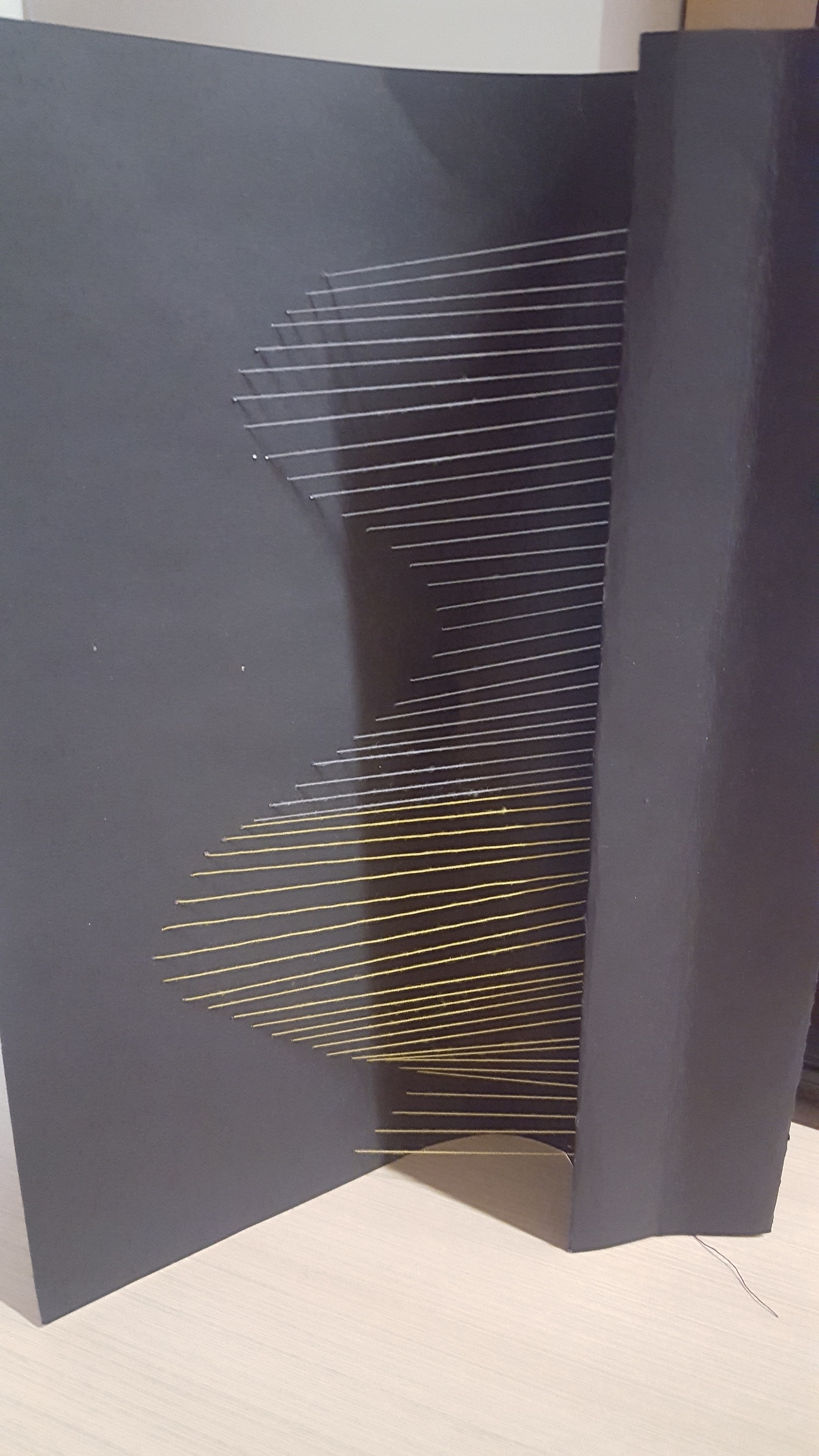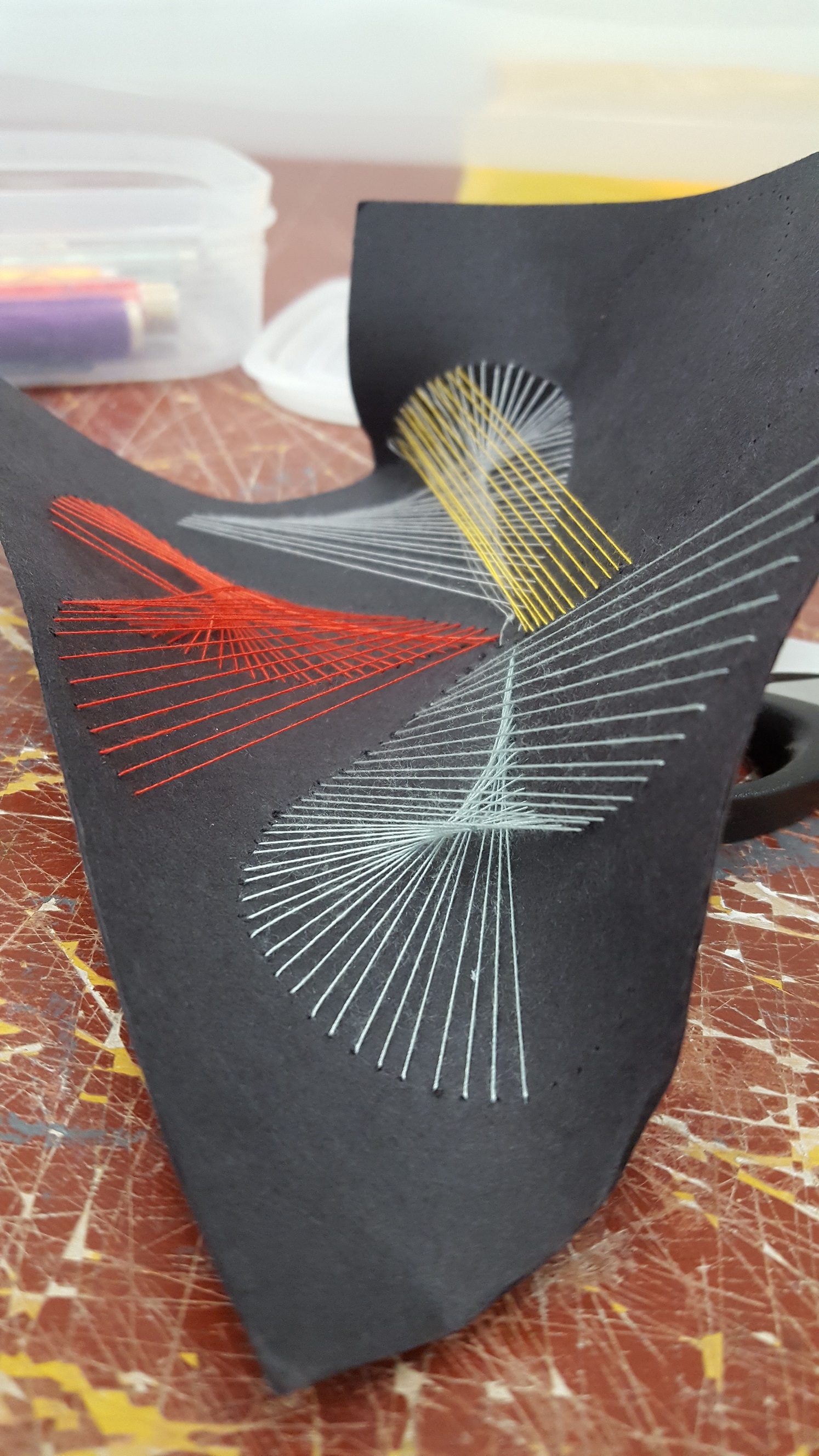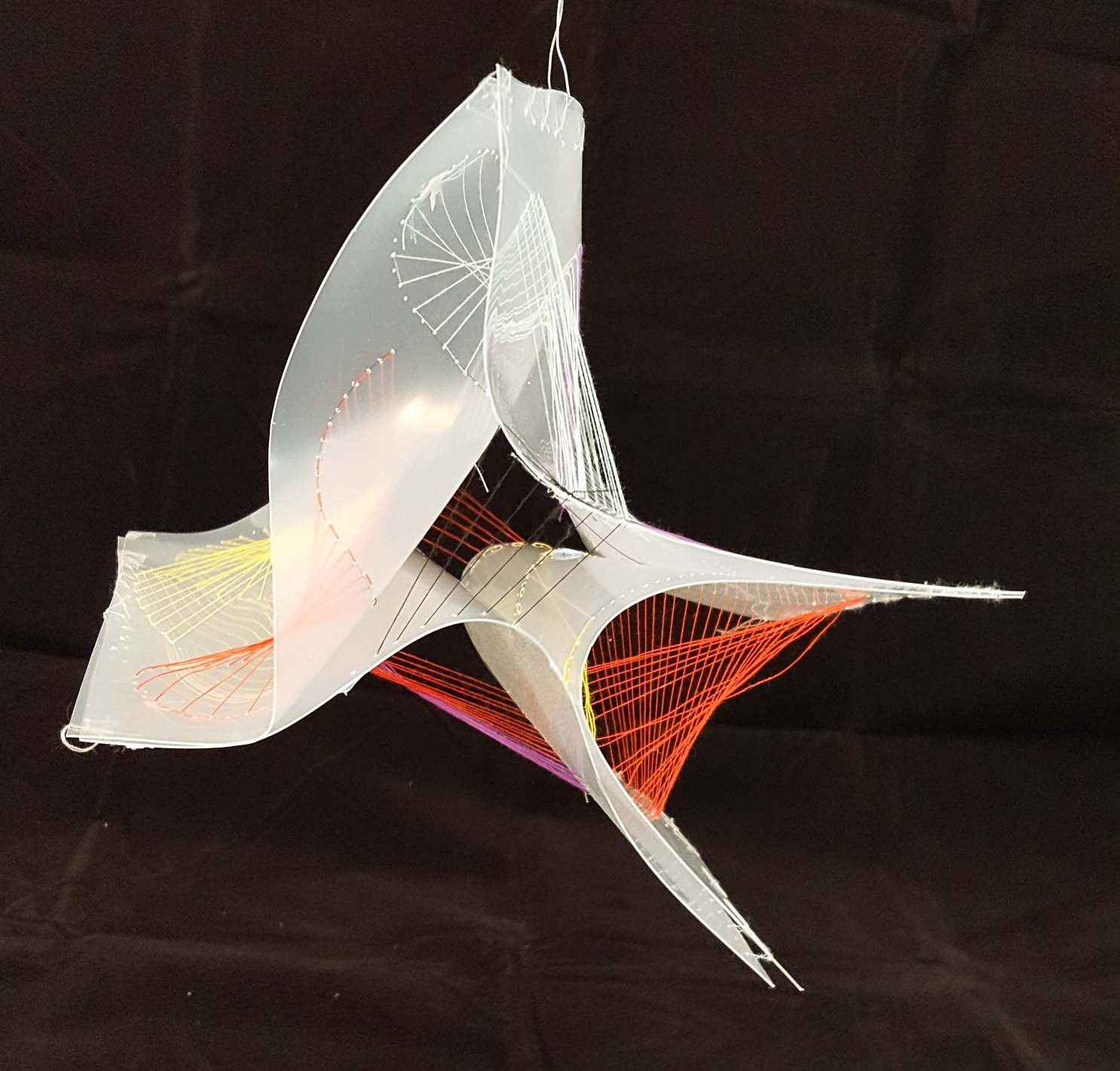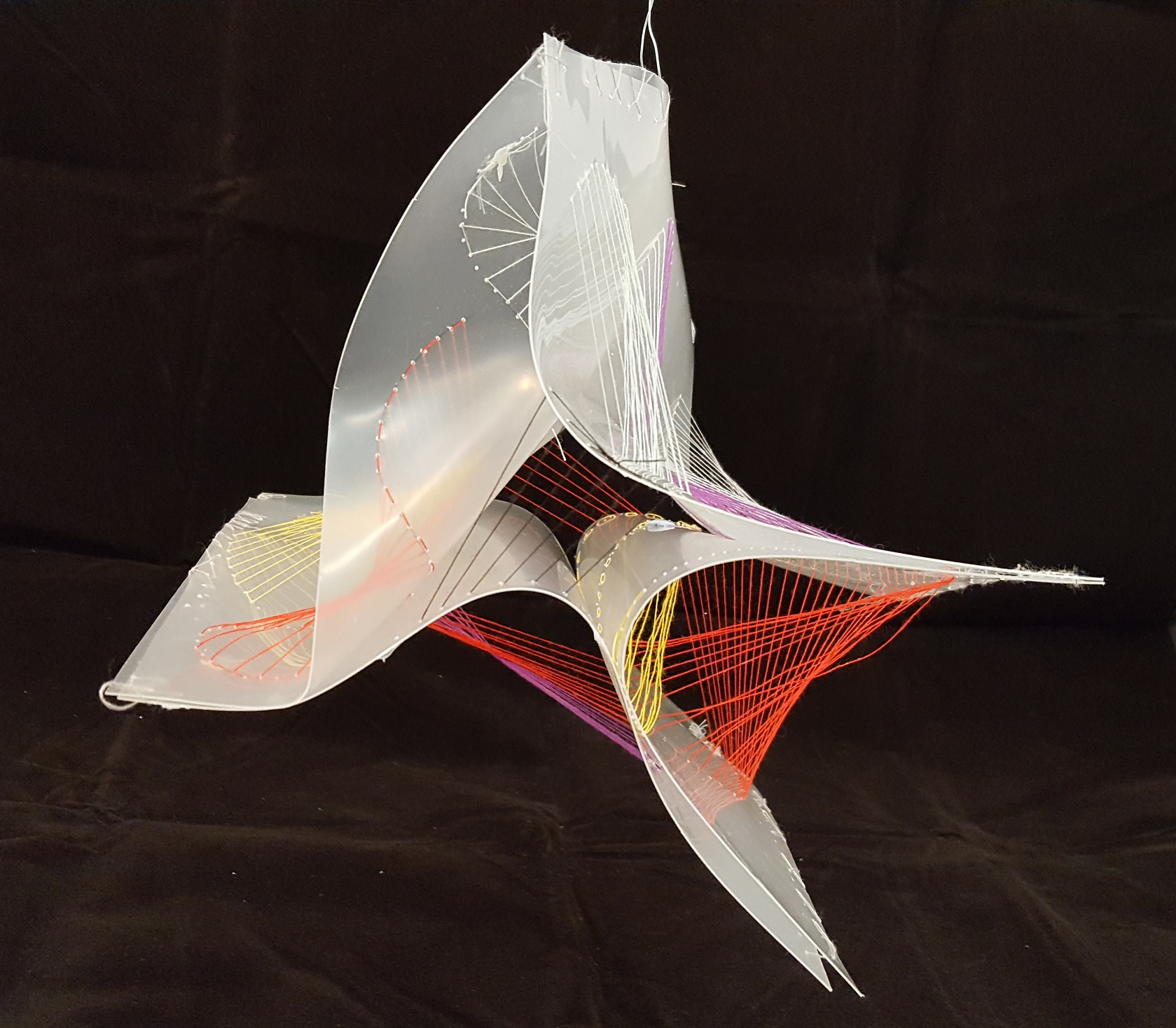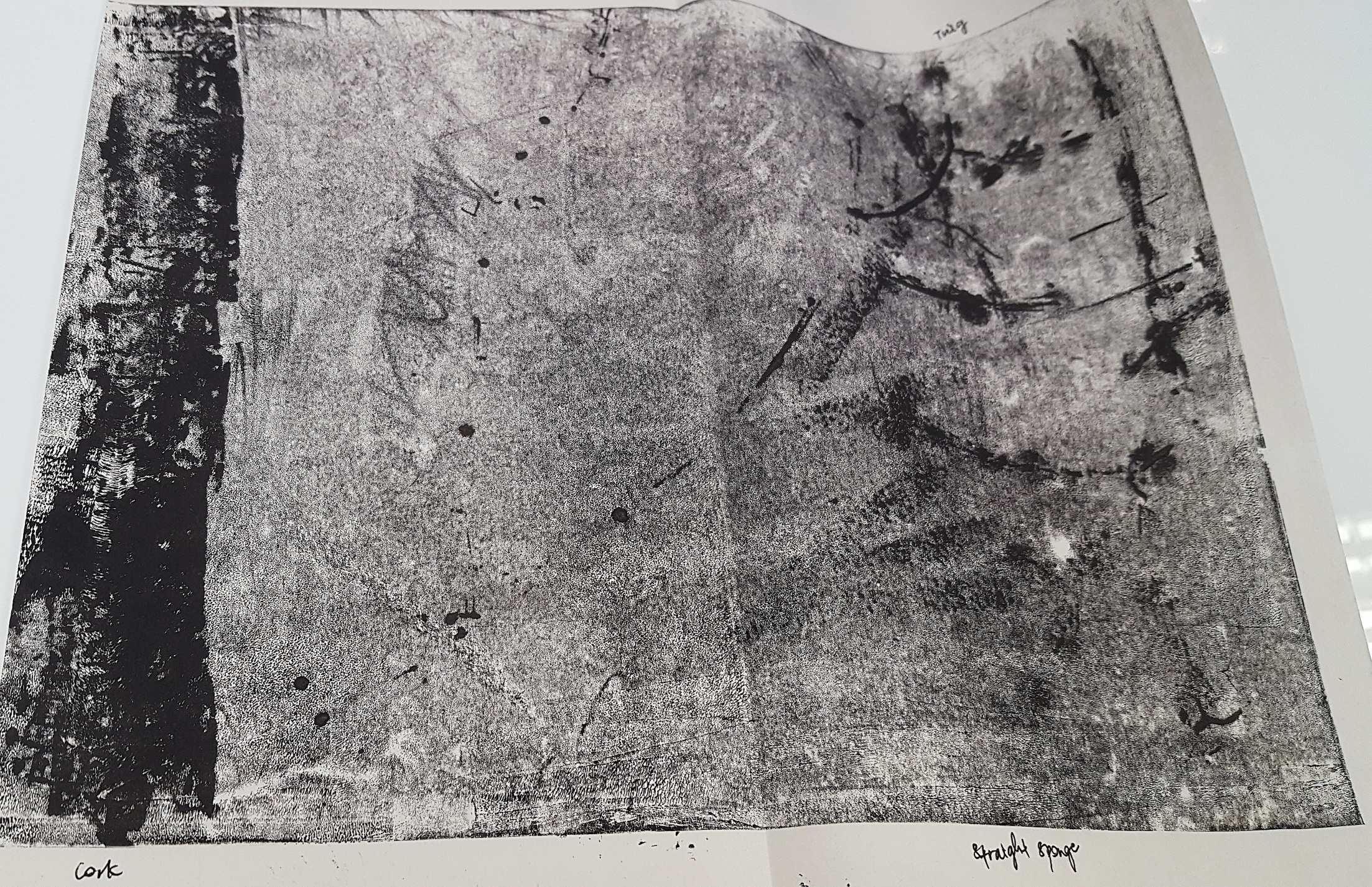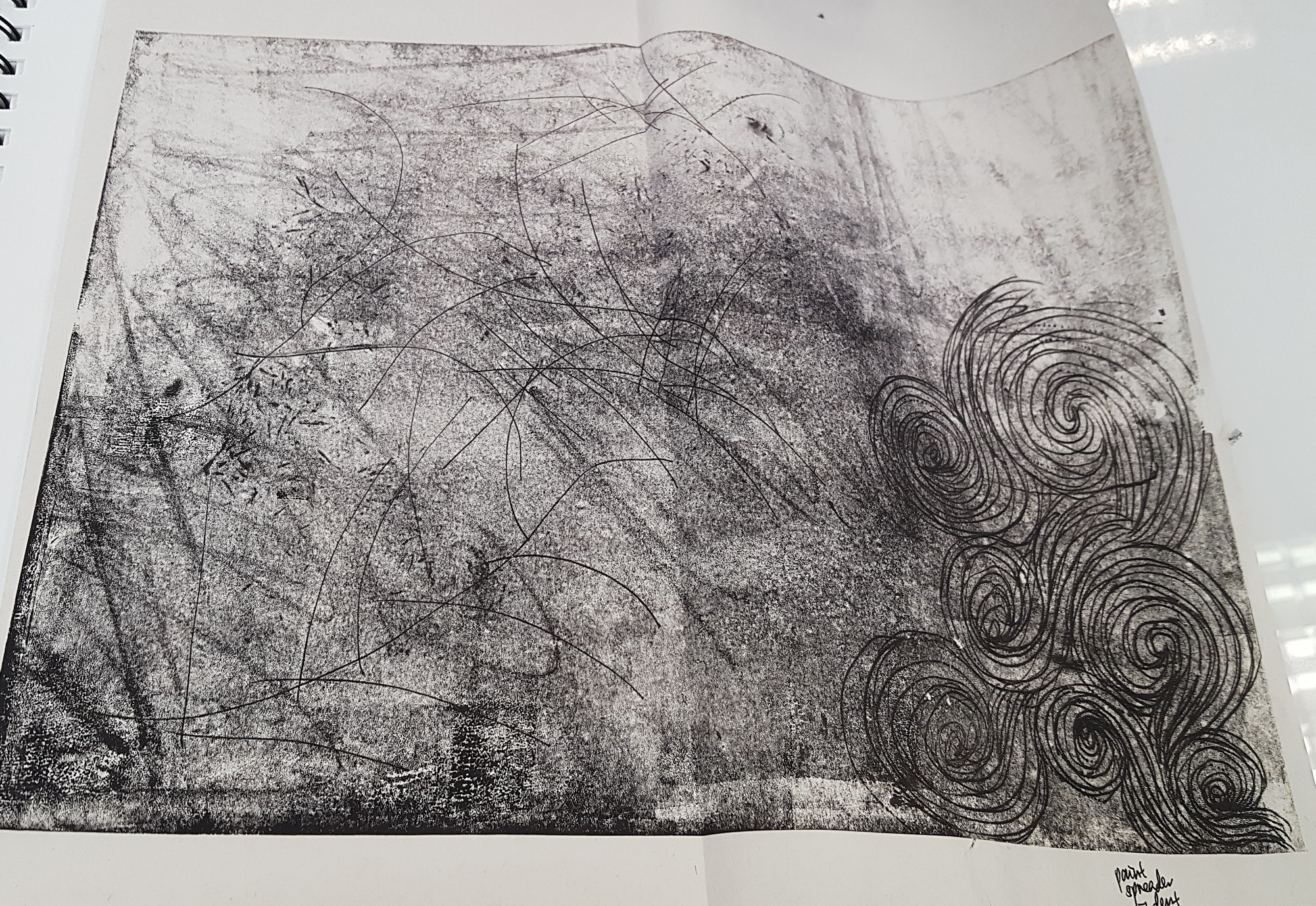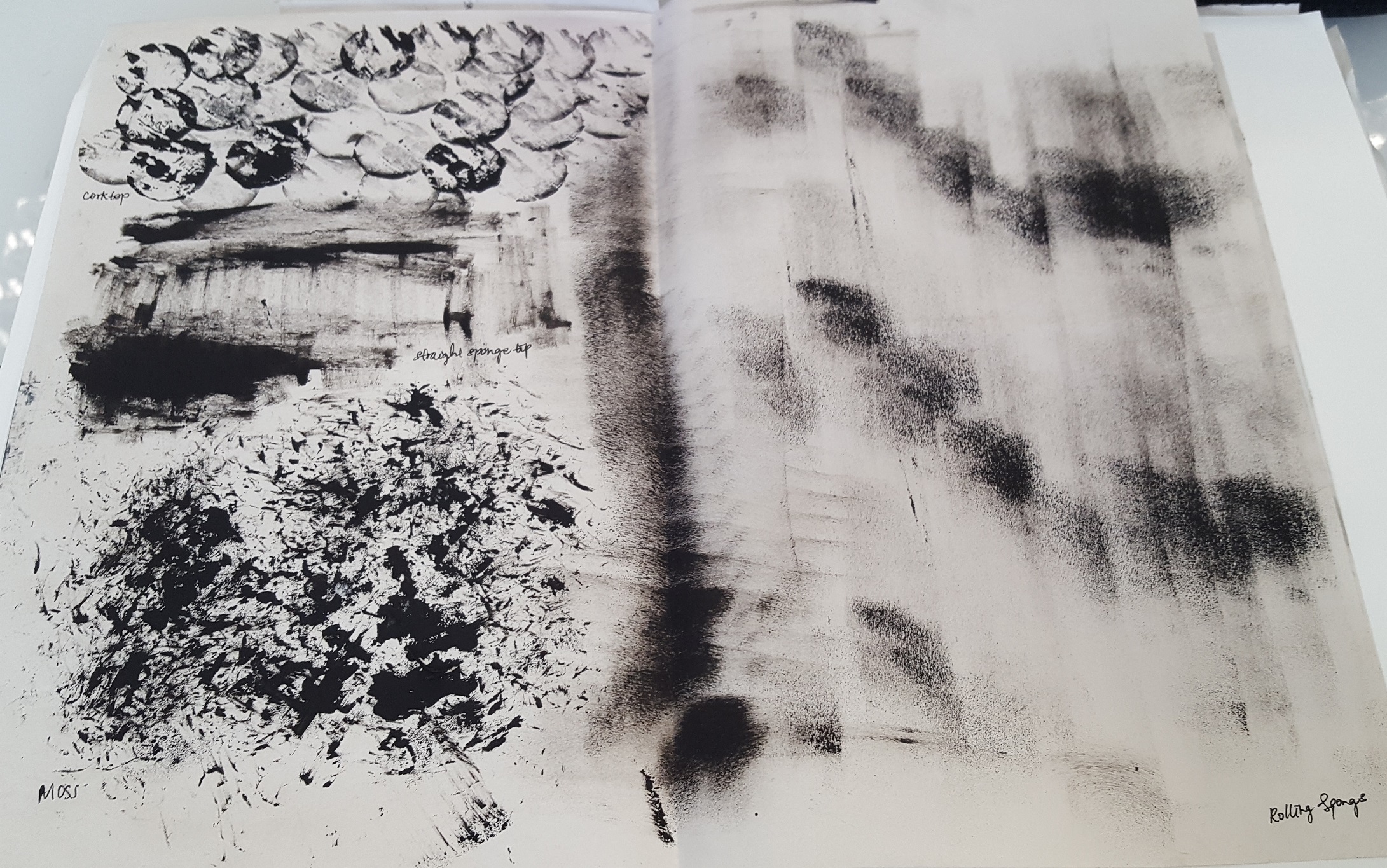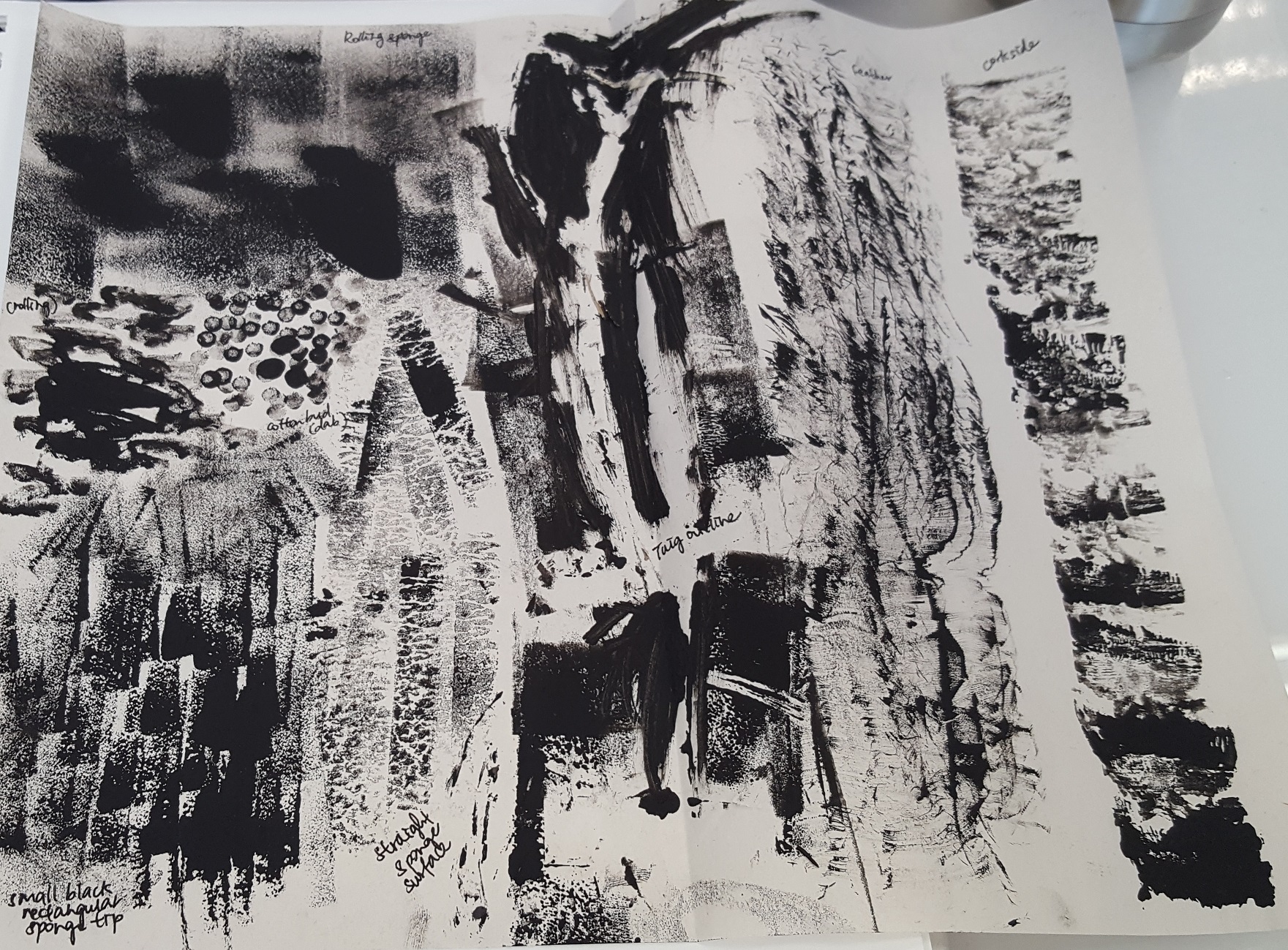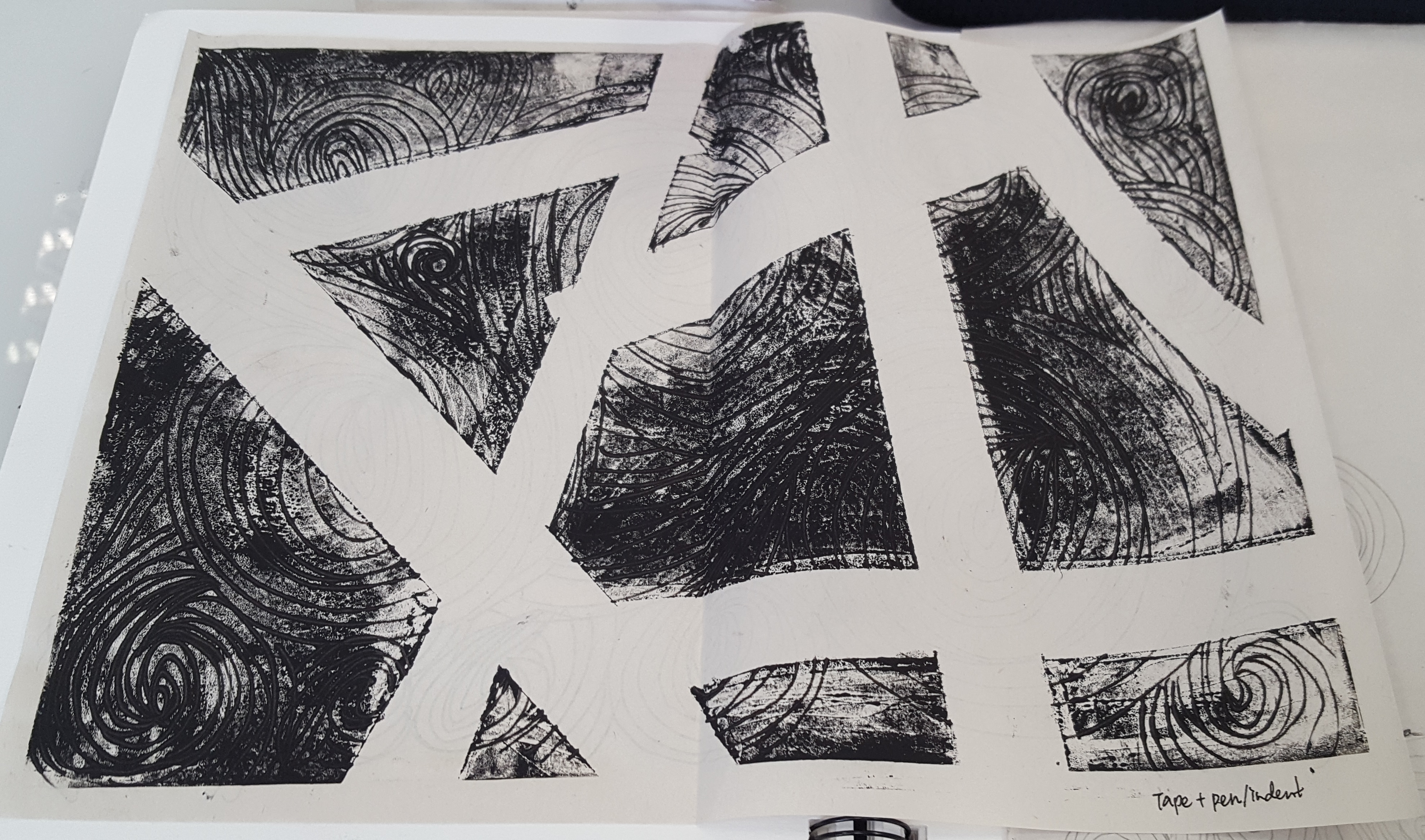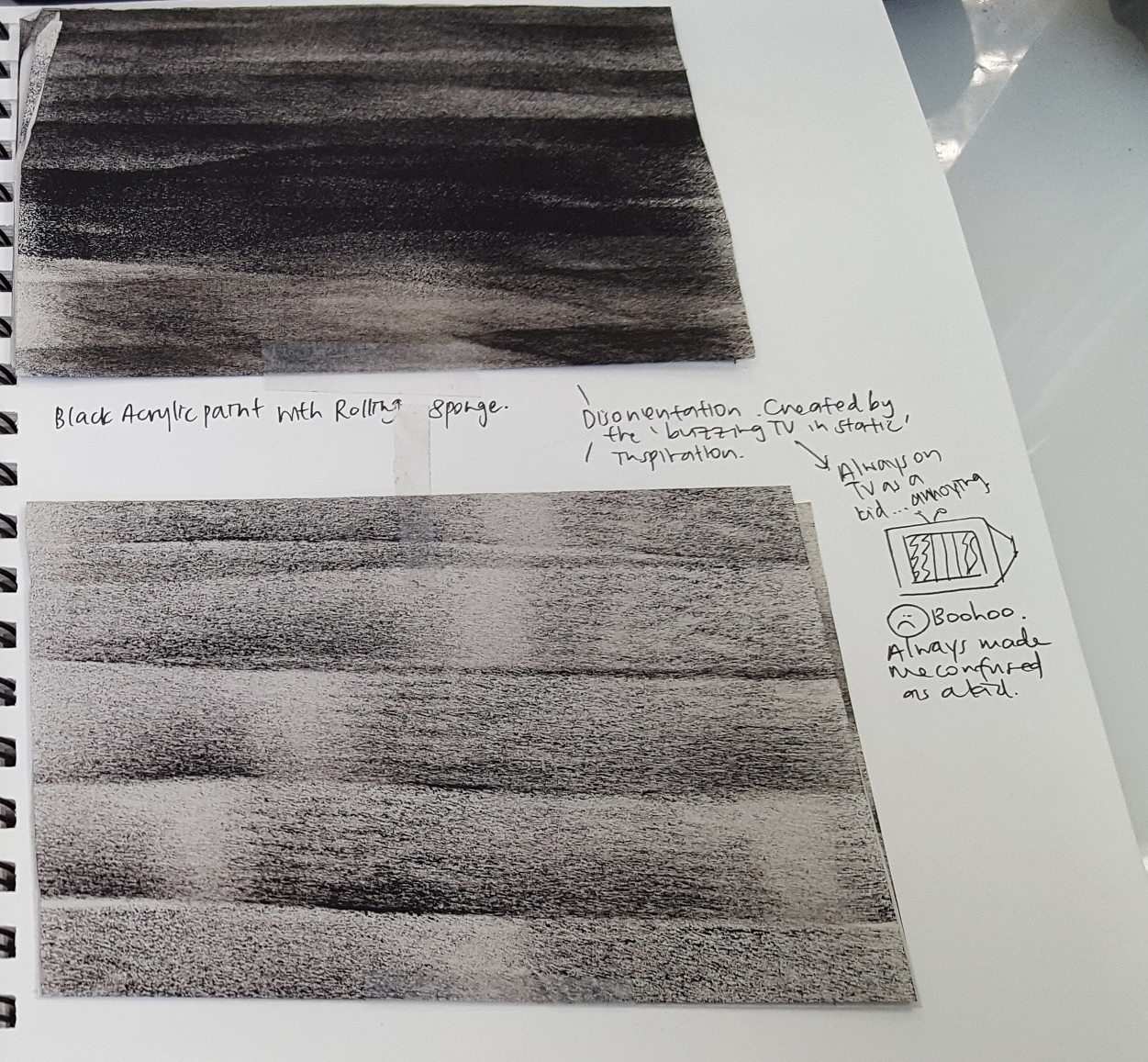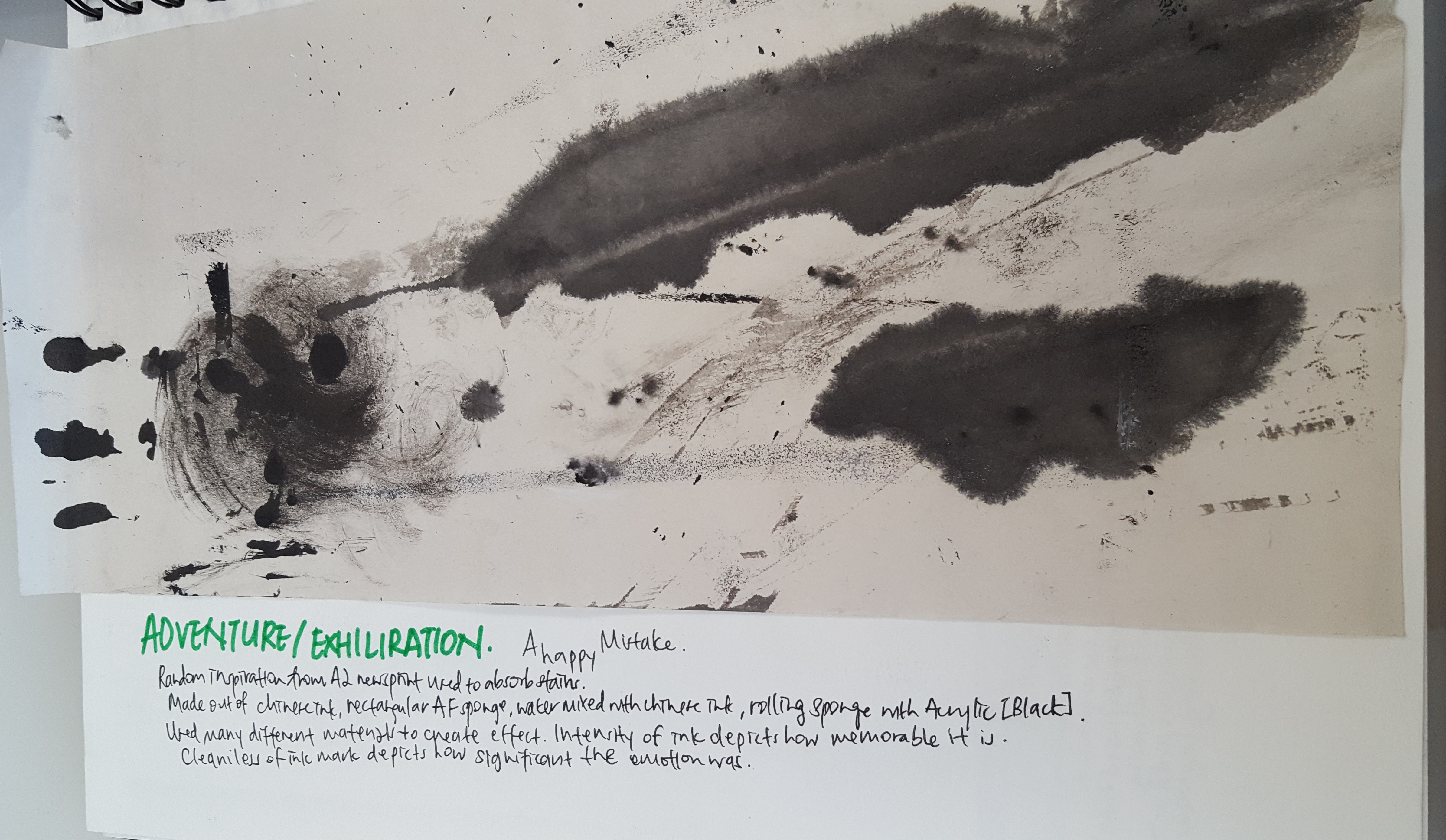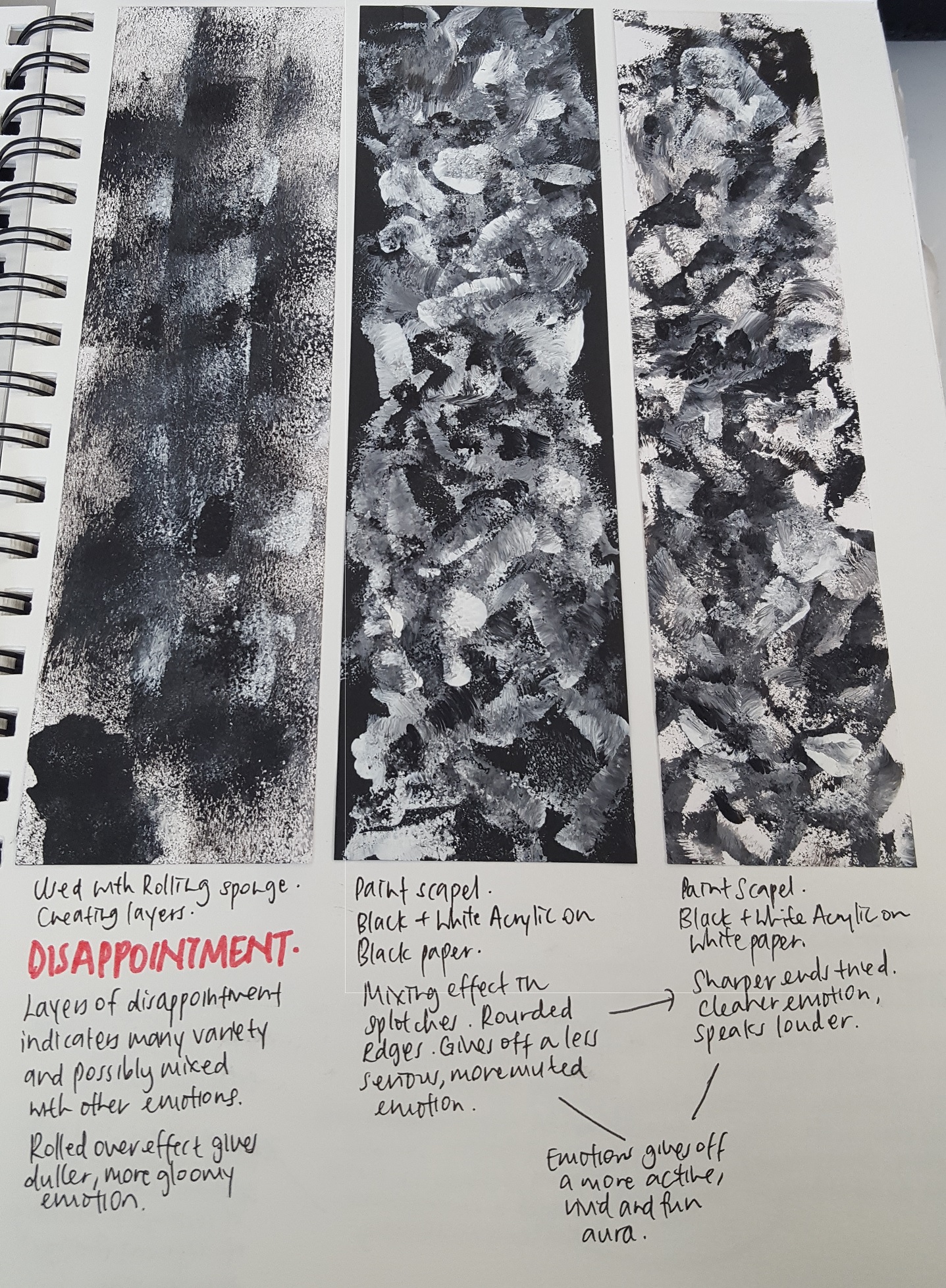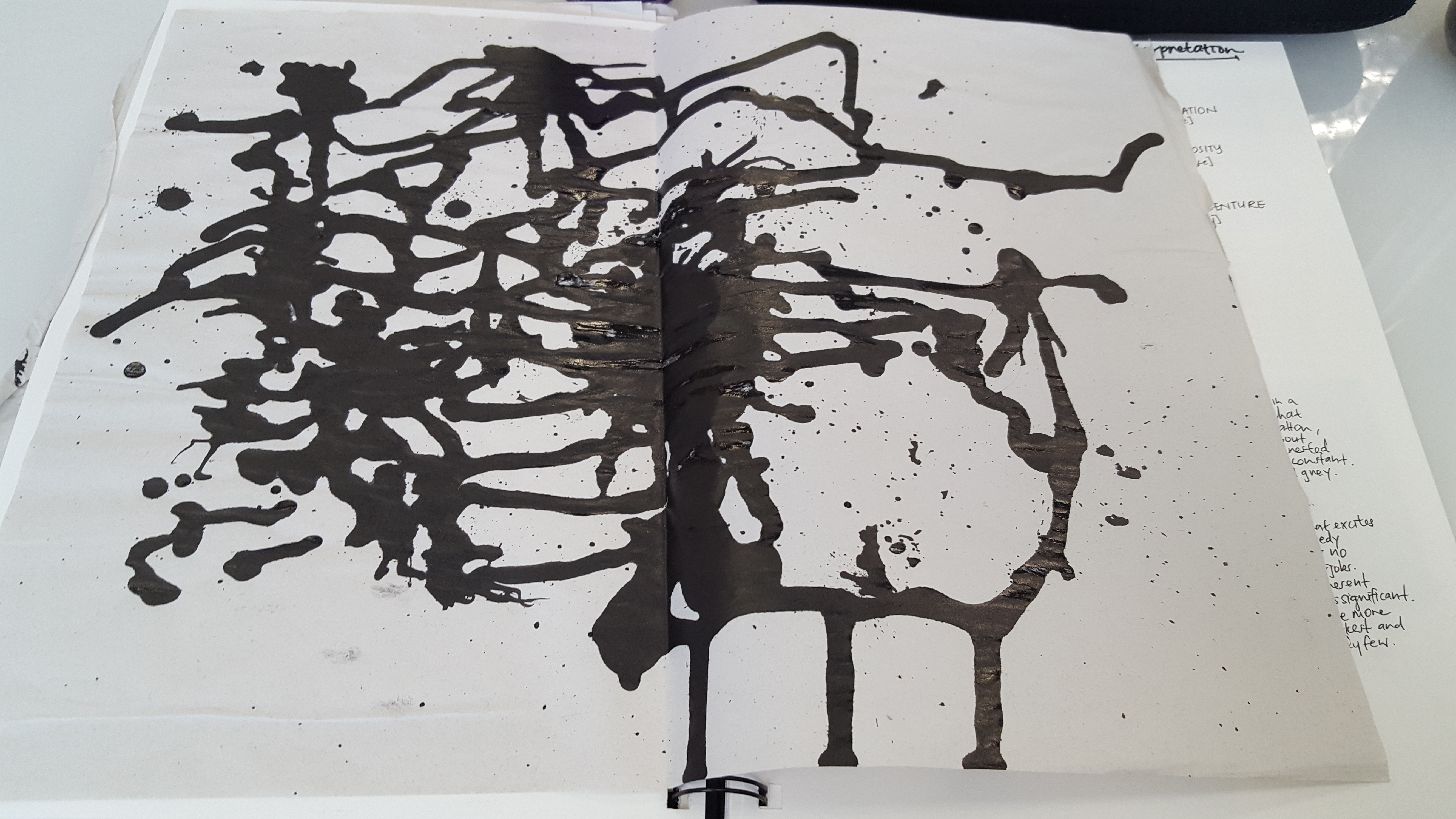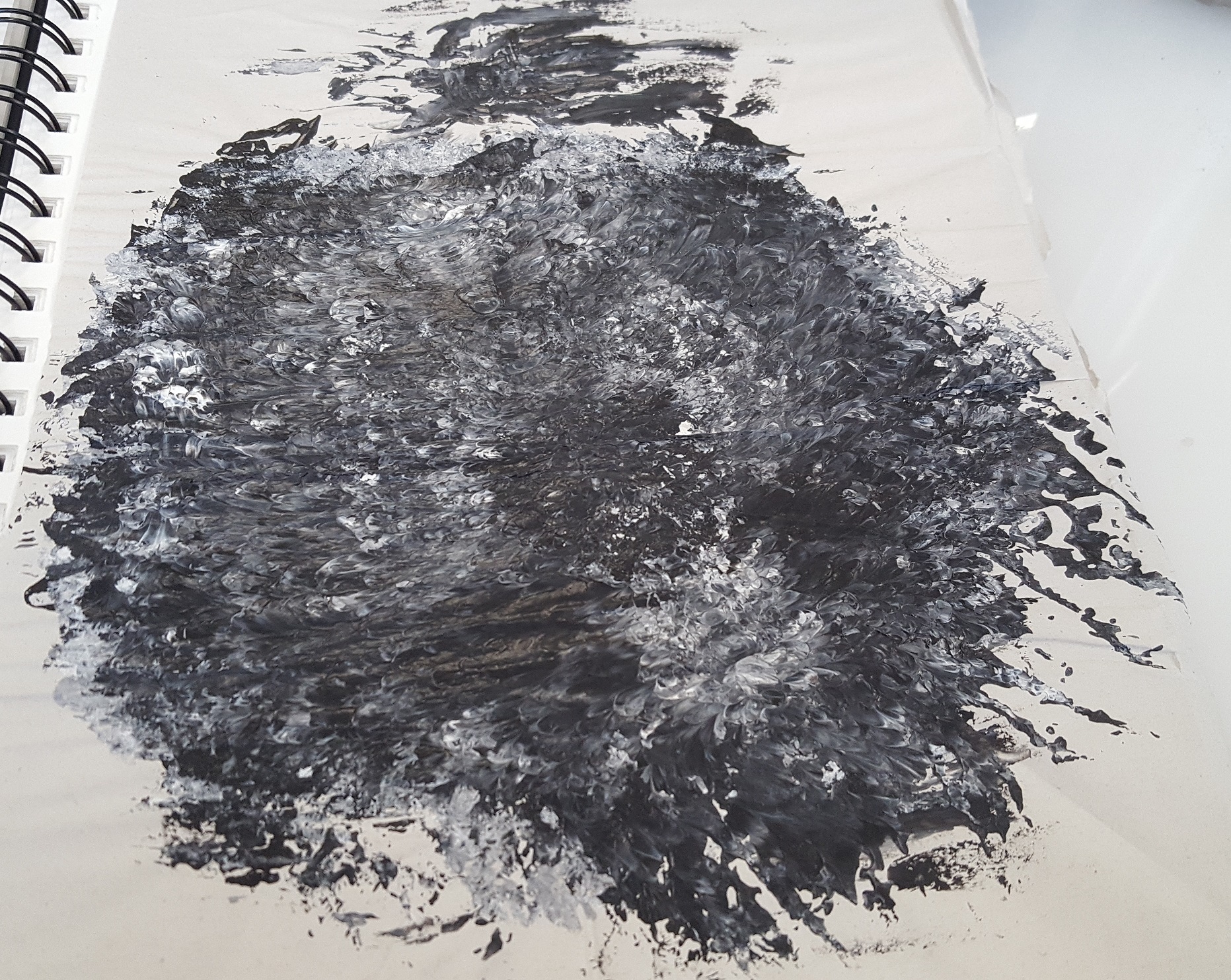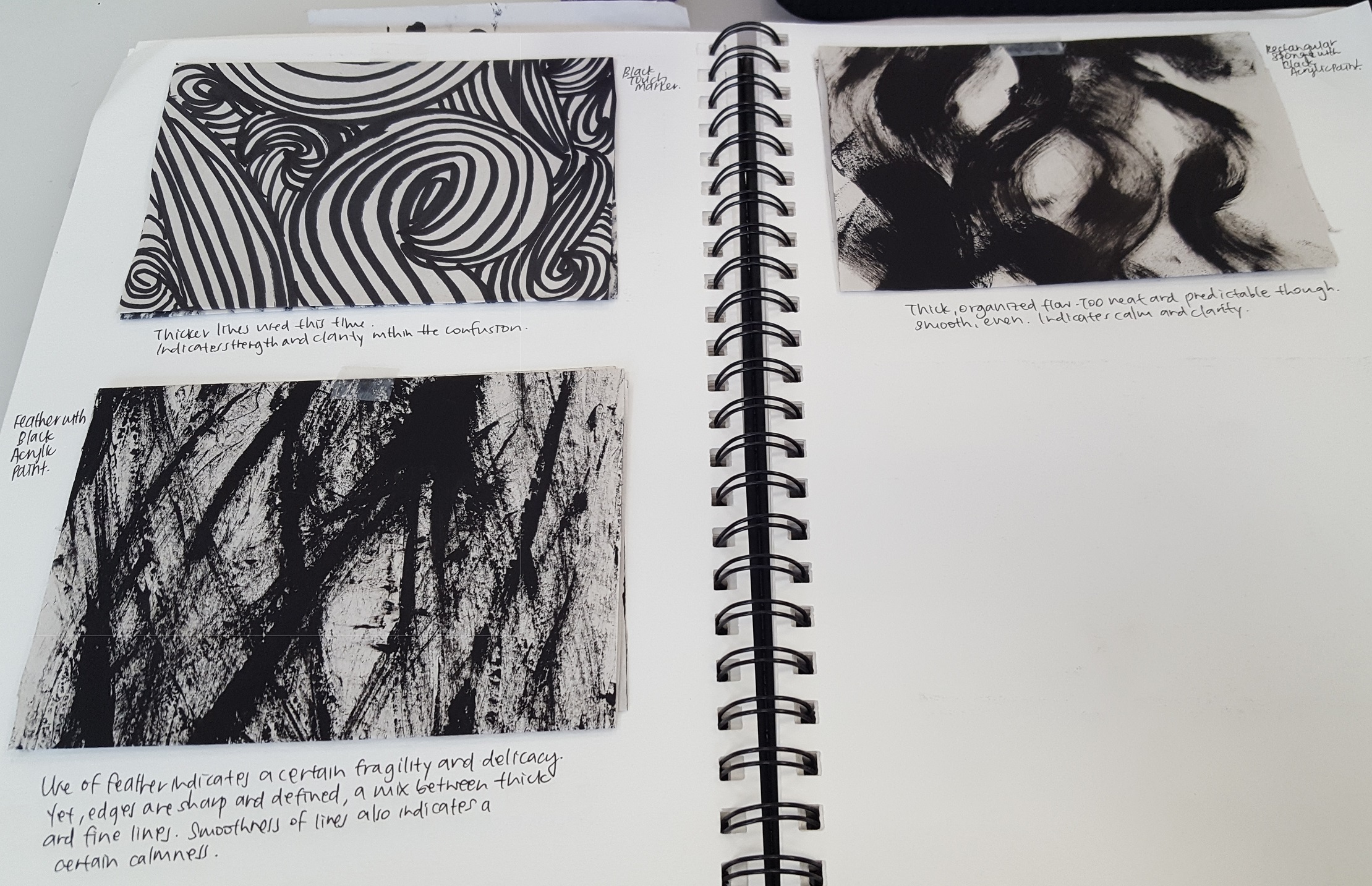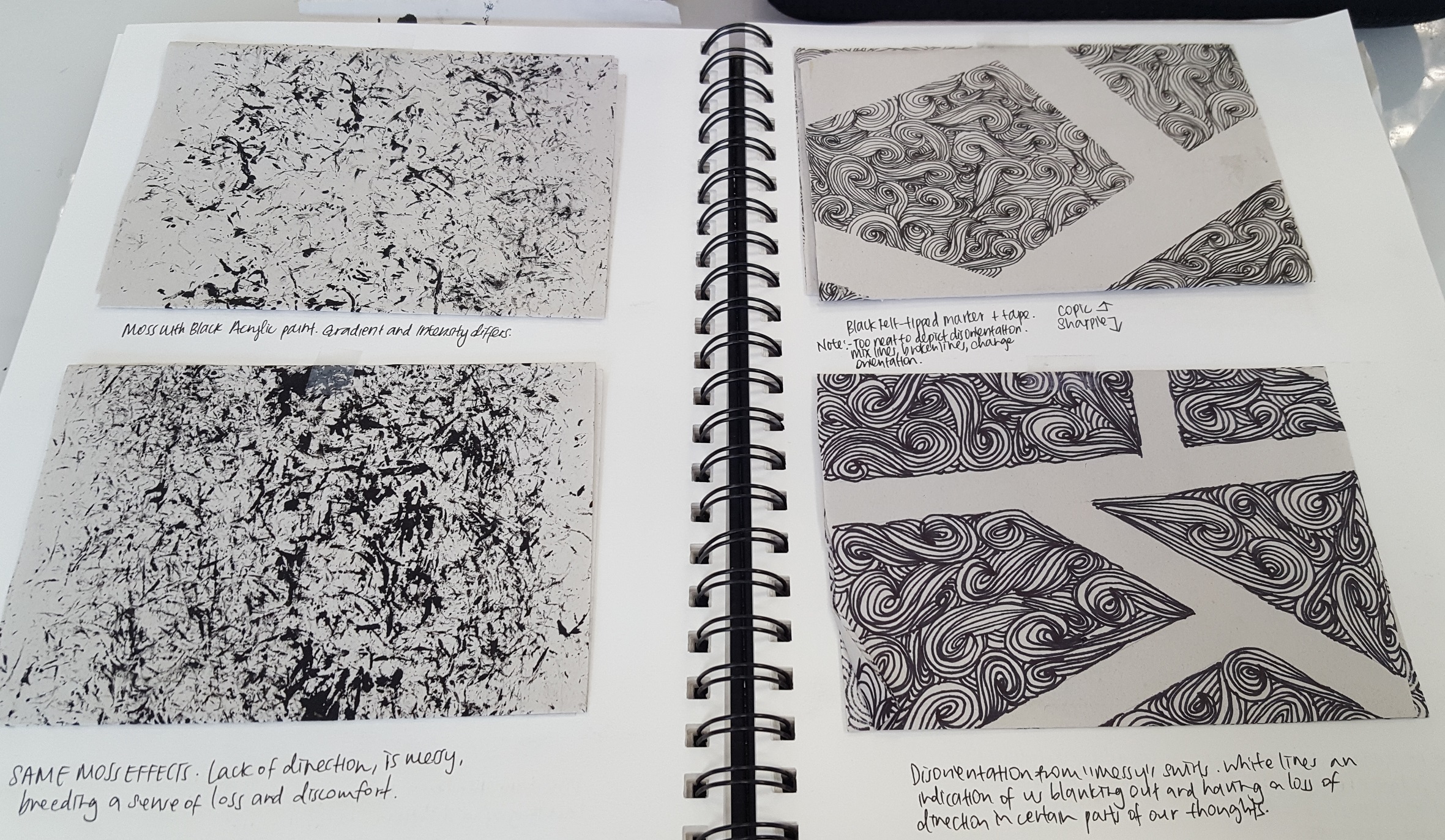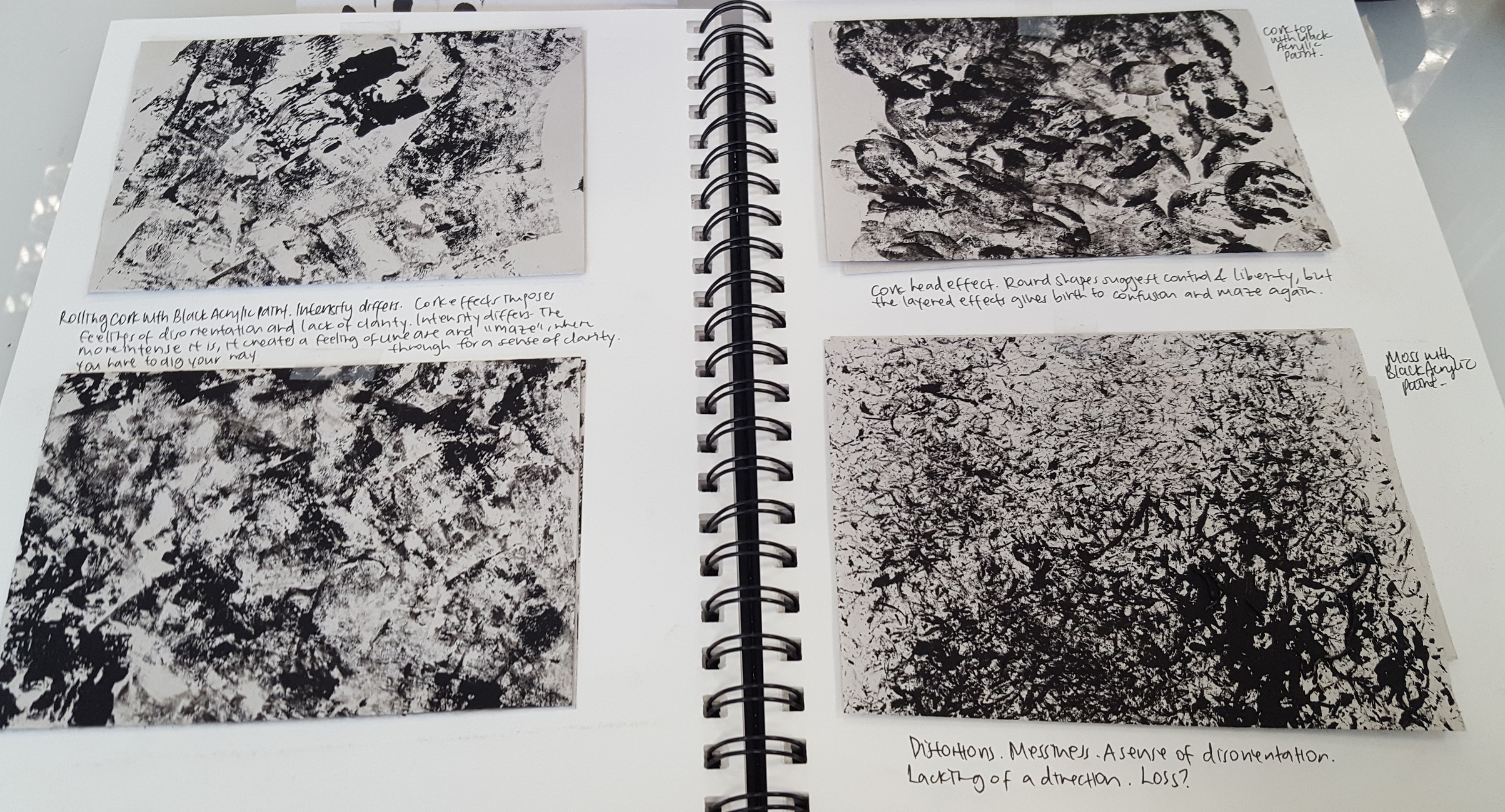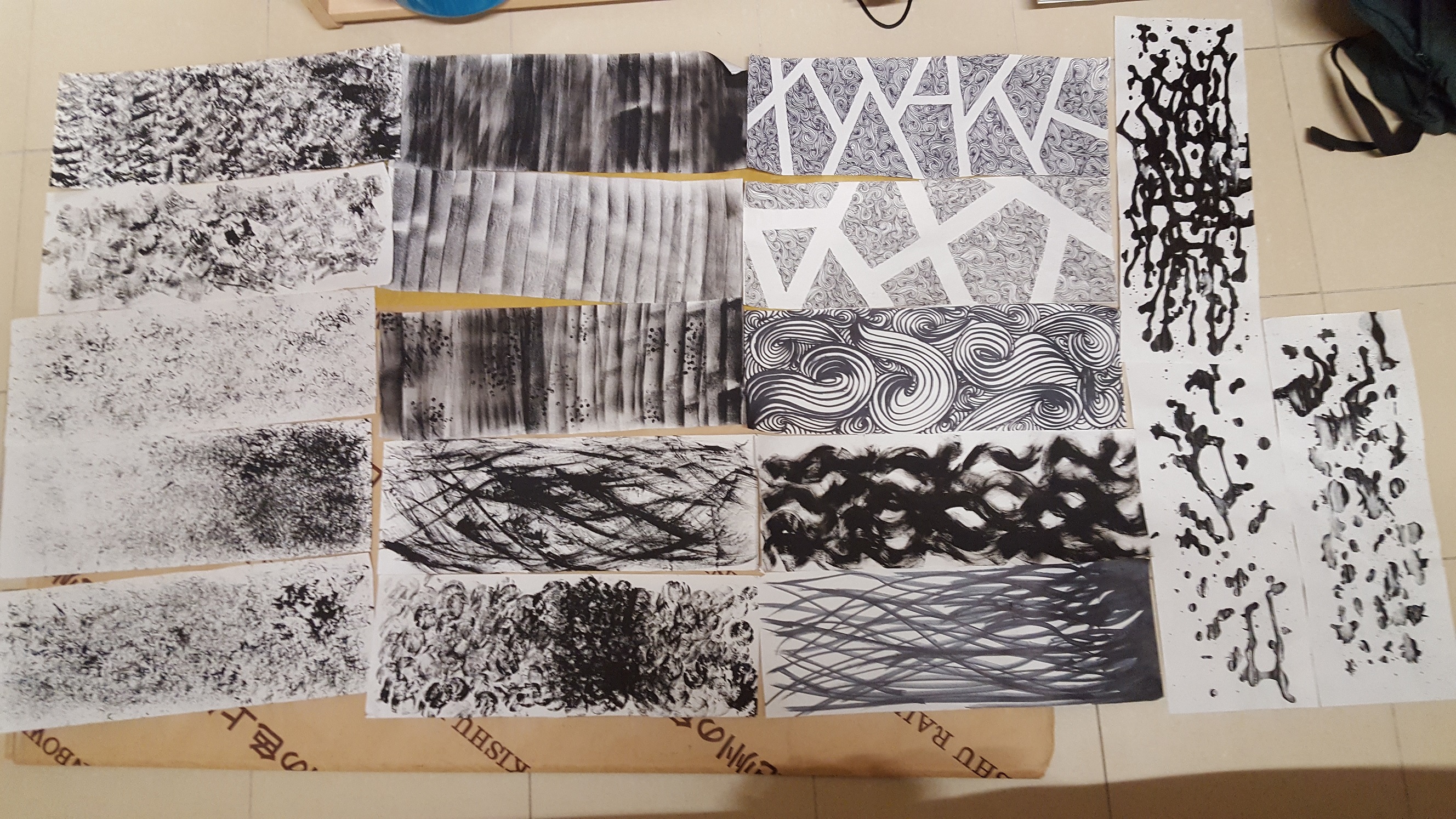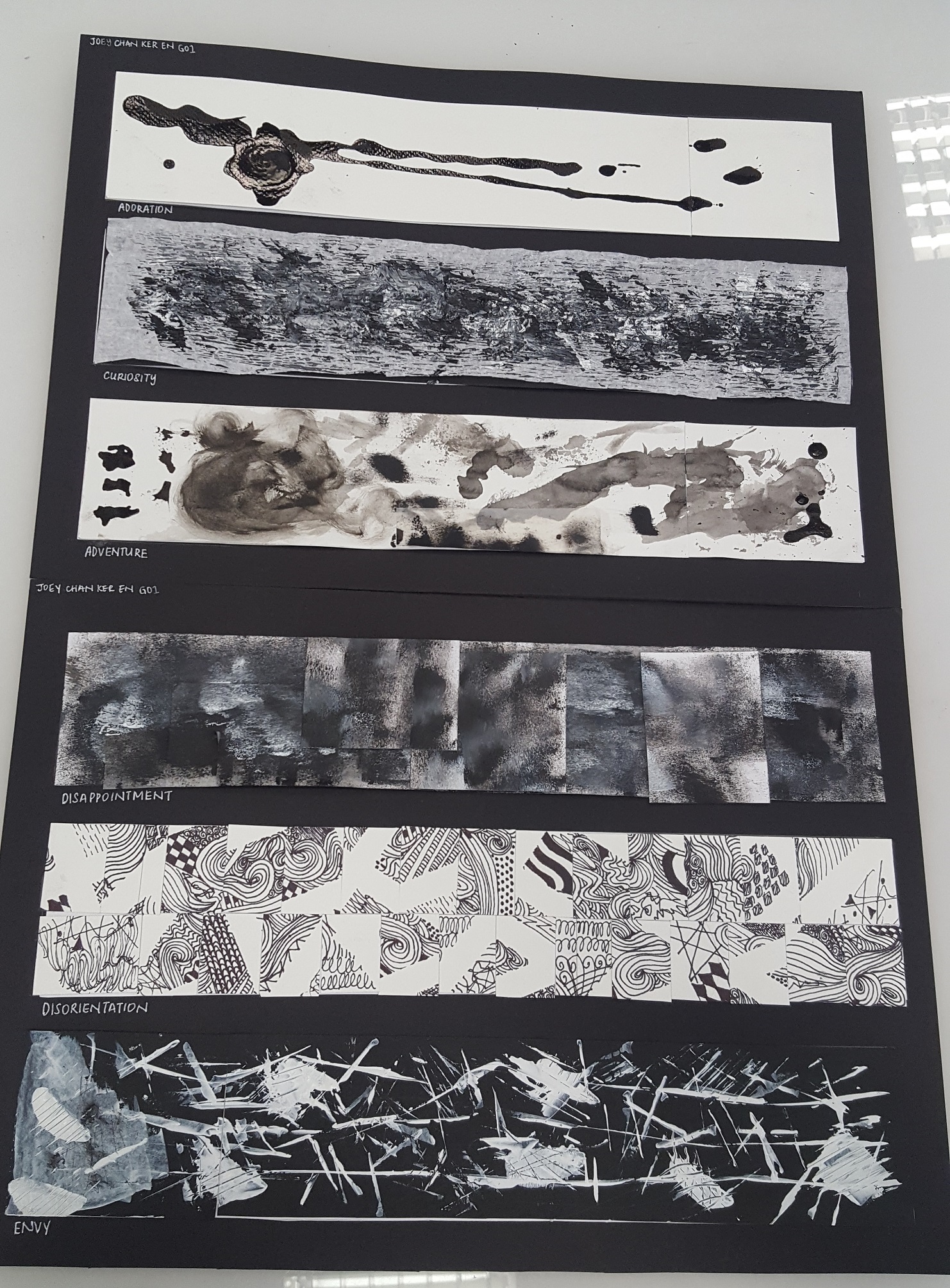
Final Piece by Joey Chan
My final piece consisted of 6 emotions from each category; Adoration (Love), Curiosity (Surprise), Adventure (Joy), Disappointment (Sadness), Disorientation (Fear) and Envy (Anger).
- Adoration
Materials used: Droppers (Experimentation), Chinese Ink, Water Coloured Paper
Method: Dripping one heavy drop of Chinese ink vertically on my canvas.
Adoration stems from a tiny love, which will eventually spark into a bigger love. It is stronger than fondness. One usually starts to like a person by slowly finding him or herself adoring the little or big parts of what makes up their partner. Some parts are bigger [larger adoration, hence larger sploshes], for example when they smile a certain way. That is where the splosh is greater than the other inked areas. Adoration levels are also uneven and there is no same single time where the level of adoration is at the exact same level. Ultimately, most adoration are intertwined with each other, forming the love one has for another.
2. Curiosity
Materials used: Crepe Paper (Childhood, Adolescence; Kids’ Handicraft material), Black and White Acrylic Paint
Method: Using a paint spatula to apply paint haphazardly onto the white crepe paper with a black background.
Curiosity comes in many layers. The first map, the basis of the feeling, lies in a mind-scape where it is crinkled. The crinkled effect is representative of what we already know or feel from past experiences. Adding on to this information, with the help of curiosity, are the things we want to find out and know about. Knowing human nature, there are a lot of things that we may be interested to find out about, and the rate of information we receive may not be constant. Hence, this produces the different, haphazard layers of black, white and grey.
3. Adventure
Materials used: All sorts of materials, especially Chinese ink and sponge.
Method: All sorts of application with Chinese ink and Black Acrylic paint.
Adventure brings us many facets of feelings. We can feel euphoria at what excites us, happiness and excitement at what we discover, sadness when a tragedy strikes, or a sense of trepidation. Hence, the patterns in this emotions has no regularity at all, and are made out of all sorts of textures and splatter jobs. There are also layers created by the depth of colour. The lighter colours represent the lighter/less serious memories. These are memorable but may not be as significant. The darker colours are those that are more memorable and significant. The more faded the colours are, the hazier the memories about them are. The darkest and cleanest would represent the most vivid memories- and there are only few.
4. Disappointment
Materials used: Rolling sponge, tracing paper, cartridge paper, Black and White Acrylic paint
Method: Rolling black and white paint on the canvas, and then adding layers of catridge papers and tracing papers and rolling over it again.
Disappointment comes in many facets of emotions due to the many causes of disappointment we may feel. Some are severe, while some are light. There may also be emotions mixed inside like anger, frustration, betrayal and sadness. The different layers, some overlapping, are representative of the weight/significance of the event over others. The ones that are more prominent are those that seem the most “recent”. The mix of black, white and grey signify how the emotions have blurred lines, and there is no one clear-cut disappointment. The darker colours are used to exemplify the stronger feelings of disappointment, in contrast to the lighter tones.
5. Disorientation
Materials used: Sharpie Marker, Tape (Signifying boundaries)
Method: Pasting tape over the paper and drawing on the white spaces. After the line art is done, remove the tape. Afterwards, cut the paper into small squares and rearrange them accordingly onto another piece of canvas before sticking it down.
Disorientation is a feeling of confusion, which makes little sense. Even though it is classified under sadness, I chose to represent the emotion with vivid images and patterns to sieve in further confusion and in a way that nothing would make sense. The lack of continuous straight white paths add to this feeling. The cleanliness of the art is representative of the creepiness we feel when we are being disoriented. It is a world we cannot comprehend. There is also a neatness such that the top row scrambled stays in order, and same goes for the bottom row. This orderliness is representative of how one still has enough sense to try to figure out what is causing their confusion, while feeling disoriented.
6. Envy
Materials used: White Acrylic Paint (Stark White paint), black paper
Method: Using a paint spatula to create sharp edges of white on the black paper. For the large white shade, I used the flat part of the spatula instead of the shark edge.
To me, envy is sharp and piercing. It is also haphazard, because it is an emotion which comes when we are least expecting it to. The larger, white spots are the feelings which are overwhelming, while the sharper lines are the thorns we feel. At the left side, there is a murky haze of white, which represents a lack of coherence we may feel when we do not understand why we feel envy. I chose to represent this feeling with white on black because while the black symbolizes how our mind blanks out upon envy, we also feel the pain and jealousy which may come sharp, and as painful as the stark, vivid white.
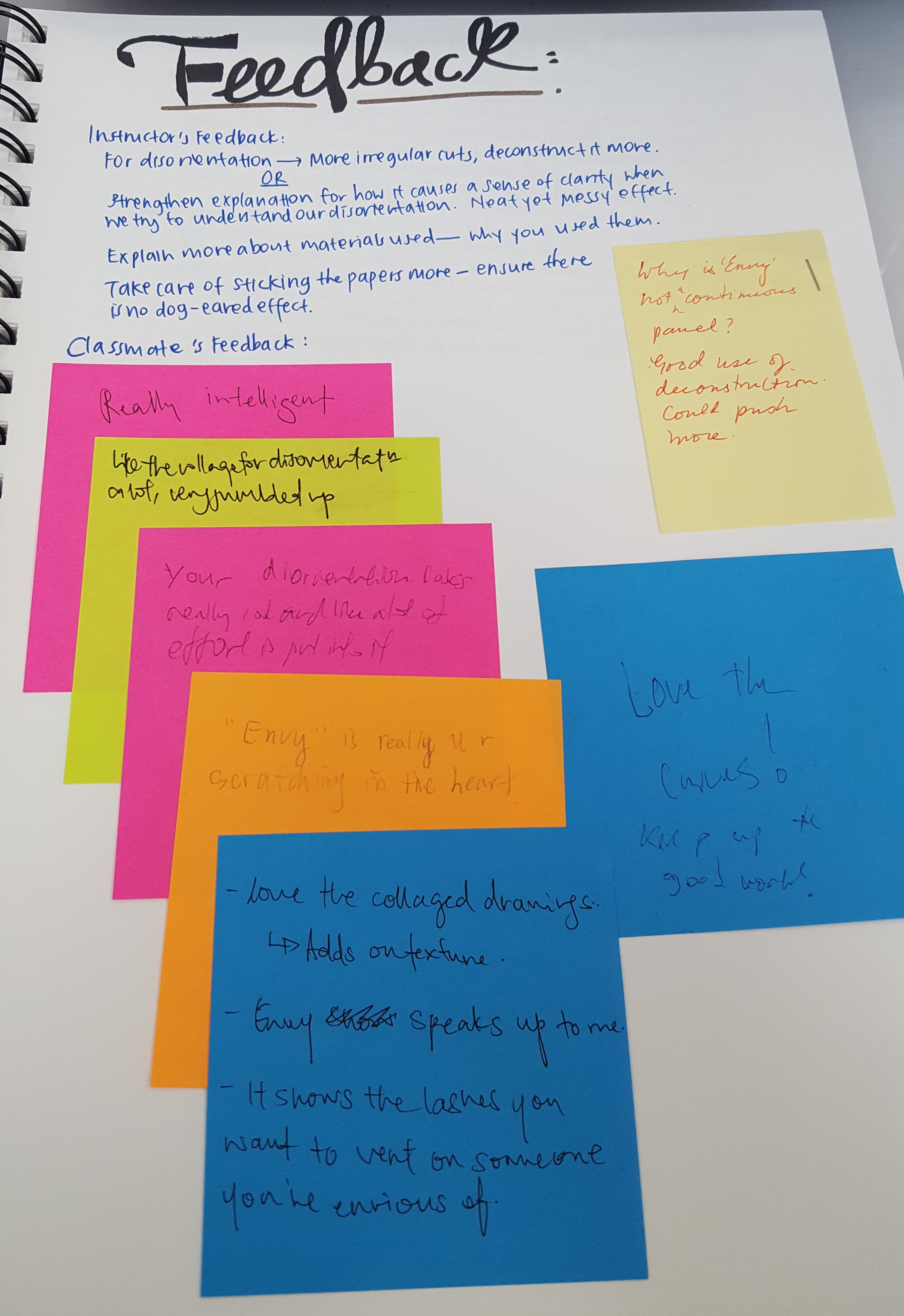
Feedback from Professor and Peers

My Reflection for this Project.
